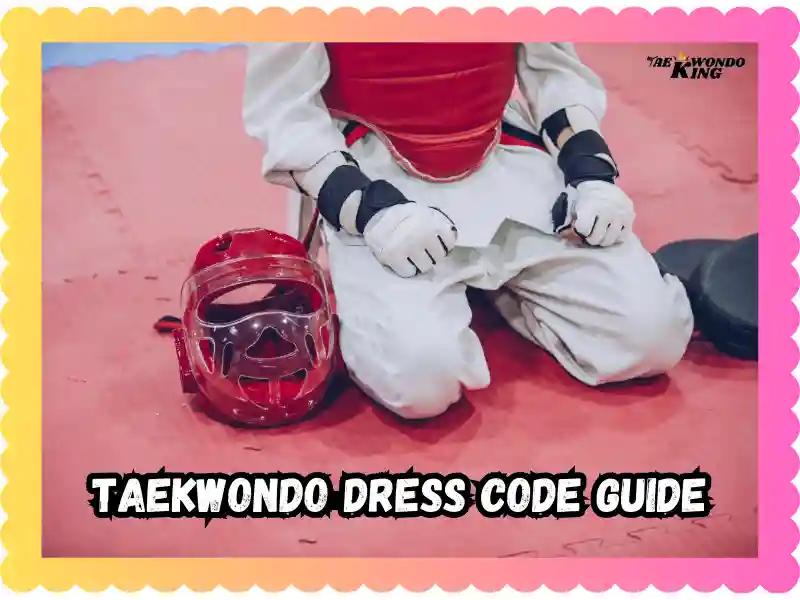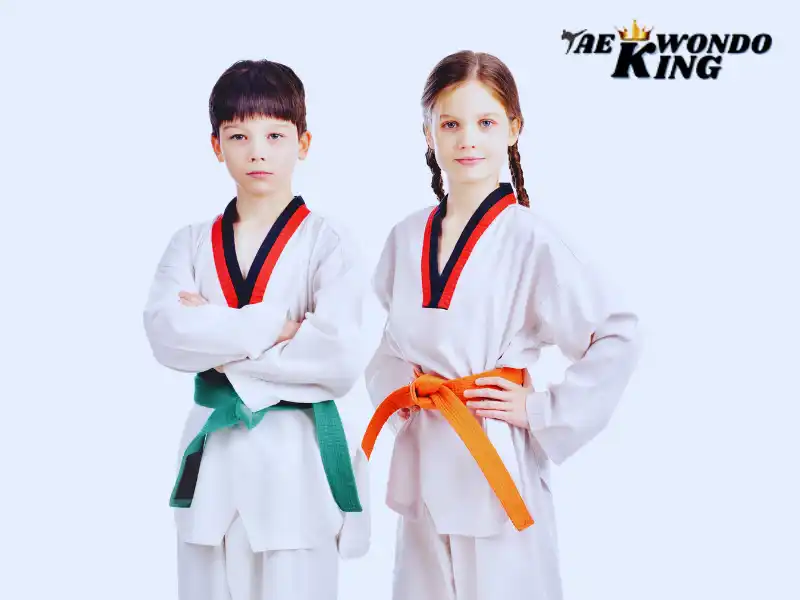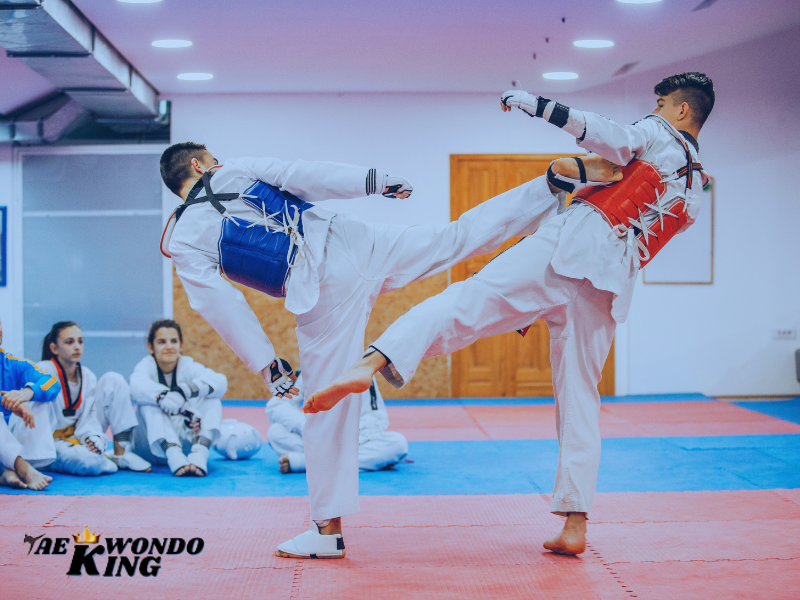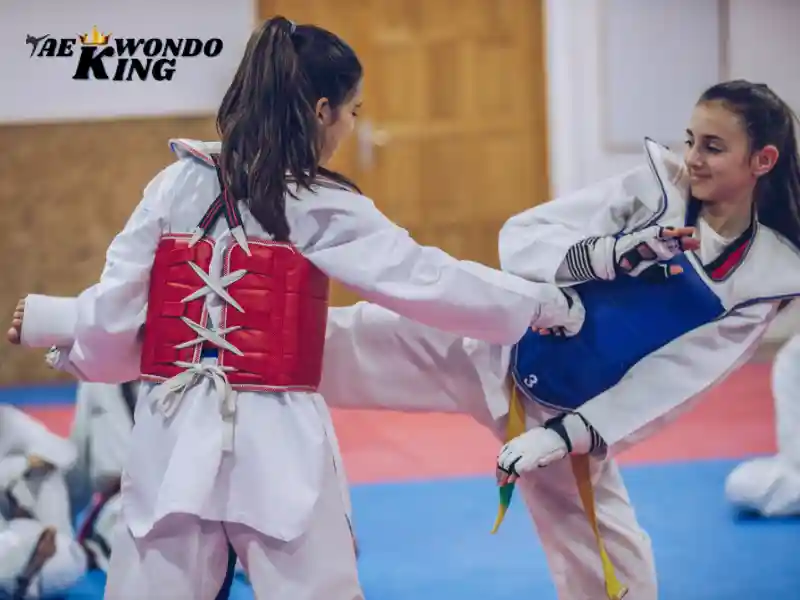
I still remember tying my first belt, nervous hands, a wrinkled uniform, and the quiet pride that came with it. The Taekwondo dress code isn’t just about tradition; it sets the tone for discipline, respect, and unity on the mat. As a coach and lifelong student, I’ve seen how this simple outfit carries deep meaning in every class.
In this guide, I’ll walk you through what to wear, why it matters, and how it shapes your mindset. Let’s get into the fabric of what makes Taekwondo more than just a sport.
See the latest Adidas Taekwondo Ballet Shoes price on Amazon.

The Importance of the Taekwondo Dress Code
The taekwondo dress code holds importance for various reasons. Firstly, it encourages a feeling of unity among practitioners. When everyone dons a uniform, it cultivates a shared identity. Secondly, it mirrors the values of taekwondo. The dress code signifies respect for the art and its traditions. Finally, wearing appropriate attire guarantees safety during practice.
Taekwondo encompasses more than simply a martial art. It represents a discipline that embodies respect, tradition, and commitment. One significant element of this tradition is the taekwondo dress code. This code specifies what practitioners ought to wear during training and competitions. Grasping the taekwondo dress code is crucial for both newcomers and experienced practitioners.
The Elements of the Taekwondo Dress Code
The taekwondo dress code comprises several elements. These consist of the dobok, belt, and protective gear. Each component serves a distinct purpose and adheres to the principles of the art.
The Dobok
The dobok is the traditional attire worn by taekwondo practitioners. It generally consists of a top (jacket) and trousers. The dobok should be constructed from durable material. It must allow for unrestricted movement. The color of the dobok may differ based on the practitioner’s rank and school. Most beginners wear a white dobok. As practitioners advance, they may don colored doboks.
Categories of Doboks
- Traditional Dobok: This is the conventional style worn by the majority of taekwondo schools. It is typically white and features a simple design.
- Competition Dobok: Intended for tournaments, these doboks are lightweight. They facilitate optimal movement and performance.
- Instructor Dobok: Instructors may wear a dobok that differs in color or style to indicate their rank.
The Belt
The belt is a crucial component of the taekwondo dress code. It denotes the practitioner’s rank and skill level. The belt system differs among schools, but it generally ranges from white to black. Each color signifies a particular level of achievement.
- White Belt: Represents a beginner. It symbolizes innocence and a lack of knowledge.
- Colored Belts: As practitioners progress, they obtain colored belts. Each color indicates advancement and comprehension.
- Black Belt: Signifies mastery and skill in taekwondo. It serves as a symbol of respect and commitment.
Protective Gear
Safety is of utmost importance in taekwondo. Practitioners are required to wear protective gear during sparring and competitions. The taekwondo dress code necessitates specific protective equipment, including:
- Headgear: Shields the head during sparring.
- Chest Protector: Safeguards the torso against strikes.
- Shin Guards: Protect the shins during kicks.
- Foot Gear: Cushions the feet during practice.
See the latest Adidas Taekwondo Ballet Shoes price on Amazon.

Complying with the Taekwondo Dress Code
Complying with the taekwondo dress code is vital for several reasons. First, it demonstrates respect for the art and its practitioners. Second, it cultivates a disciplined atmosphere. When everyone adheres to the dress code, it enhances the training experience.
The Significance of Cleanliness
Cleanliness is an essential element of the taekwondo dress code. Practitioners must consistently wear clean and well-kept uniforms. A filthy dobok reflects negatively on the practitioner. It may imply a lack of regard for the art. Furthermore, practitioners should make sure their belts are securely tied. A properly tied belt indicates respect and discipline.
Modifications to the Taekwondo Dress
Although the taekwondo dress code is typically strict, there might be exceptions. Some schools permit modifications for cultural purposes. For instance, practitioners may don specific attire for traditional ceremonies. It is crucial to discuss any modifications with instructors.
The Role of the Instructor in the Dress Code
Instructors have a significant role in upholding the taekwondo dress code. They establish the standards and expectations for their students. Instructors should set an example by wearing the proper attire. They also inform students about the importance of the dress code.
Teaching the Dress Code to Students
Instructors ought to educate students about the taekwondo dress code from the very first day. It is important to clarify the significance of each component. Students ought to grasp the reasons for wearing a dobok, belt, and protective gear. This understanding enhances their appreciation for the art.
Encouraging Adherence to the Taekwondo Dress
Instructors should promote compliance with the dress code by stressing its significance. They can offer reminders and reinforce positive habits. Cultivating a culture of respect and discipline will enable students to take the dress code seriously.
See the latest Adidas Taekwondo Ballet Shoes price on Amazon.

Common Mistakes Regarding the Taekwondo Dress Code
Numerous practitioners make mistakes concerning the taekwondo dress code. Being aware of these common missteps can assist practitioners in sidestepping them.
Inappropriate Attire
Donning inappropriate attire can cause distractions during training. Practitioners should refrain from wearing jewelry or accessories that might present safety hazards. Additionally, loose clothing should be avoided, as it can hinder movement.
Neglecting Hygiene
Disregarding hygiene can result in embarrassment and disrespect. Practitioners should verify that their doboks are clean and in a suitable condition. This straightforward act demonstrates respect for oneself and fellow practitioners.
Failing to Wear Protective Gear
Some practitioners might forgo wearing protective gear, believing it to be unnecessary. Nevertheless, safety is crucial in taekwondo. Practitioners are required to wear protective gear during sparring to avert injuries.
Conclusion
The taekwondo dress code is a vital component of the martial art. It symbolizes respect, tradition, and unity. Practitioners need to comprehend and comply with this code. From donning a clean dobok to securely tying their belts, every detail is important.
Instructors have an essential role in instructing and enforcing the dress code. By nurturing a culture of respect and discipline, they ensure that students recognize the significance of the taekwondo dress code.
Ultimately, the dress code enhances the overall training experience. It fosters a sense of community among practitioners. When everyone adheres to the dress code, it elevates the practice of taekwondo.
FAQs
What to wear in Taekwondo?
In Taekwondo, you wear a dobok, a lightweight uniform designed for movement. It’s paired with a colored belt that matches your skill level.
How do I choose a Taekwondo uniform?
Pick a dobok that fits well, is breathable, and matches your training style (WT or ITF). Ask your instructor for the best local or online options.
What is the dress code for Taekwondo?
The Taekwondo dress code includes a clean white uniform called a dobok and a belt that shows your rank. Learn more about proper gear and traditions.
What do girls wear under a Taekwondo uniform?
Girls often wear a fitted t-shirt, sports bra, or leggings under the dobok for comfort and modesty. Learn more about female uniform tips here.
What should I wear to my first Taekwondo class?
If you don’t have a uniform yet, wear a t-shirt and loose pants. Most schools will guide you on getting a proper dobok after your first class.
See the latest Adidas Taekwondo Ballet Shoes price on Amazon.


Founder, Owner, and CEO of TaekwondoKing.
He is one of the top 100 martial artists in the World and among the top 20 referees in Bangladesh.
Ehatasamul Alom is an esteemed Kukkiwon Certified Taekwondo 3rd Dan Black Belt with over 15 years of experience in this dynamic martial art. Born in Rajshahi, Bangladesh, Ehatasamul’s journey with Taekwondo began at the tender age of seven. His passion led him to compete at national and international levels, where he has bagged numerous awards and honors. He is also a member of the Taekwondo National Referee Panel.
With a Bachelor’s degree in Sports Science from the prestigious Rajshahi University, Ehatasamul has a deep understanding of the technical and scientific aspects of martial arts and some other martial arts.
In 2022, Ehatasamul created the “TaekwondoKing.com” to share his knowledge, Free Resources, Values, and Real experiences. His articles focus on Taekwondo training techniques, competition strategies, Sport Products Reviews, and the art’s rich history and philosophy. He also writes about the importance of mental fortitude and discipline, key aspects of his teaching philosophy. He has already launched many sports, Taekwondo, and health-related Free online tools. His goal is to inspire both beginners and seasoned practitioners worldwide through insightful and engaging content.
If you need any help, contact Ehatasamul Alom at any time.




